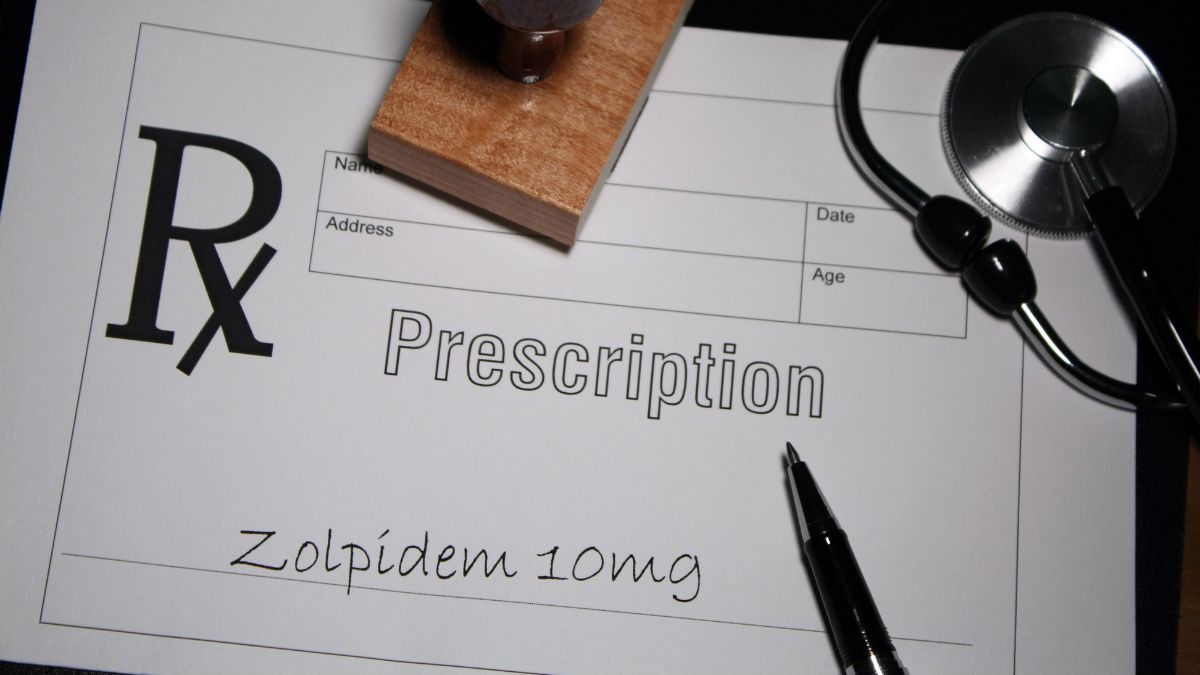Suboxone is key to medication-assisted treatment commonly used to treat opioid use disorder. Suboxone contains both buprenorphine and naloxone, which are used to wean off strong opioids like morphine or heroin. Suboxone is a prescription medication that is available both as tablets and film that is placed under the tongue or inside the cheek.
While Suboxone is highly effective, on the flip side, it does lead to withdrawal symptoms, so it needs to be tapered off for effective management of these symptoms. In this article, we will learn how to taper off Suboxone safely and a Suboxone taper schedule.
When Should You Consider Tapering Off Suboxone?
Suboxone is key to opioid use disorder treatment, as it contains both buprenorphine and naloxone. Buprenorphine is a partial opioid agonist, meaning it blocks the opioid receptors in the brain and prevents opioids from binding to them. Meanwhile, naloxone is an opioid antagonist best known for reversing an opioid overdose. It counteracts the effects of opiates on the brain. These medicines are effective in treating opioid misuse as they reduce opioid-related cravings by blocking their pain-relieving and euphoric effects.
Unfortunately, Suboxone can also lead to similar withdrawal symptoms as opioids that begin within one day after the last dose and last up to 10 days. They reach their peak (read: worst) within 3 days after the last dose. So, when you have taken Suboxone for the prescribed period, it can be difficult to simply up and quit cold turkey once the course is over.
Since the potential for suboxone withdrawal symptoms is there and can last for longer than the typical opioid withdrawal symptoms, tapering off Suboxone under medically supervised conditions or under the direction of a doctor is advised. Tapering off is when Suboxone levels are gradually reduced from the body so that it adapts to the lower doses of the medication, and it becomes easy to manage the withdrawal symptoms.
Step-by-Step Guide to Safely Tapering Off Suboxone
Suboxone is tapered off in the following ways
Direct Tapering:
This is when Suboxone levels are gradually reduced until the medication is discontinued altogether.
Titration Tapering:
This is when the medication is mixed with water, and the person drinks decreasing levels of this mixture every day. However, this is not generally recommended.
Generally speaking, the recommended Suboxone taper schedule looks something like this:
- Initial dose: 16 mg/day
- 1st day: 12 mg/day
- 2nd day: 10 mg/day
- 3rd day: 8 mg/day
- 4th day: 4 mg/day
- 5th day: 2 mg/day
- 6th day: 2 mg/day
This is one of the most common Suboxone taper schedules, and it is quite a quick Suboxone detoxification (detox). However, every person is different, so we urge you to contact your doctor before tapering off Suboxone, as it must be done under a doctor’s direction and can be unsafe otherwise. Your best way to get off Suboxone can be different from others based on different factors, so contact and regularly follow up with your doctor.
Call Design for Recovery to Begin Your Healing Journey!
Reach out to our team to discuss sober living options and next steps toward a healthier routine.
Common Challenges During Suboxone Tapering and How to Overcome Them?
When Suboxone is tapered off under medical direction, then it has little to no downsides. However, the common challenge is withdrawal symptoms, which can look like this:
- Anxiety
- Agitation
- Enlarged pupils
- Headaches
- Body aches
- Abdominal pains and cramps
- Vomiting
- Sweating
- Runny eyes and nose
- Diarrhea
- Yawning
- Sleep troubles.
Therefore, only taper off Suboxone under a doctor’s direction. If you experience any of the withdrawal symptoms, contact your doctor immediately.
Clear your schedule when you are tapering off Suboxone so that you can have the time to rest and recover.
Have your family or loved ones over, who can motivate you and be the shoulder for you to lean on when things get overwhelming.
Engage in relaxing exercises, like deep breathing exercises, meditation, or yoga, so that they can relax your mind and body.
Eat a balanced diet and drink plenty of water to stay hydrated.
Sometimes, you can experience a craving for opioids, as Suboxone is typically used in MAT for opioid use disorder. So, if relapse can be a concern, speak with your doctor so that they can consider other MAT options as well.
How Long Does It Take to Taper Off Suboxone?
Typically, it may take 3-5 days for a person to taper off Suboxone. However, this can vary. In some cases, it can take as long as a month. So, basically, this can depend on a lot of factors. But there is no right or wrong length of time; each person is different, and a successful taper is what matters at the end of the day.
Contact Design for Recovery Today!
Fill out our quick form to connect with a peer mentor and learn how our sober living community supports accountability, structure, and personal growth in recovery.
Tips for Managing Withdrawal Symptoms During Tapering
- Suboxone withdrawal is a fact. When you come to terms with this, it becomes easier to acknowledge it and be prepared for it.
- Speak with your doctor about what you can expect beforehand so that you can be prepared for what is going to come and better handle it.
- Prepare a schedule beforehand when you are tapering off Suboxone.
- Create a relaxing environment for yourself - even have someone you trust over so that they can support you, motivate you, and distract you when you need it.
- Use relaxing exercises like deep breathing exercises, meditation, or yoga that you learned during your recovery so as to relax your mind and body.
- Eat a balanced diet - incorporate fruits and vegetables. Keep your body hydrated by drinking plenty of water.
- If your withdrawal symptoms become too intense or severe, contact your doctor immediately.
The Role of Medical Supervision in Suboxone Tapering
Suboxone is almost always done under medical supervision. It is rarely done at home. So, your medical team will prepare a Suboxone taper schedule depending on your unique needs and circumstances. This can typically last for 3-6 days, but it can also take as long as a month.
Your medical team will slowly wean you off Suboxone so as to reduce and manage withdrawal symptoms. If the need arises, medications like clonodine, naltrexone, and sublocade can also be prescribed to treat Suboxone withdrawal. The goal here is to ease these withdrawal symptoms so that you gain the strength you need in your recovery as your system gets used to the decreasing doses of Suboxone until it is reduced to zero.
Alternatives and Supportive Therapies During the Tapering Process
As an alternative, a herbal substance known as kratom is used for opioid withdrawal symptoms. However, kratom gives rise to similar effects to opioids and is not recommended. In fact, kratom is considered to be a dangerous substance in the U.S., and its apparent medical uses are largely based on anecdotal evidence.
However, outpatient treatment involving supportive therapies like individual therapy/counseling, group therapy, and recovery meetings like Narcotics Anonymous can be highly effective for you during the Suboxone tapering process. Your rehabilitation center of choice will provide you with these services as they wean you off this medication.
What to Expect After Successfully Tapering Off Suboxone?
One thing not to lose sight of in the Suboxone tapering process is the wider factor of your recovery from opioid use. When you successfully taper off Suboxone, your body no longer feels the need for the medication, as you also experience the benefits of the sober life ahead of you. Your body regains the strength it needs during your recovery. However, you may still require aftercare involving ongoing therapy/counseling, relapse prevention, 12-step recovery meetings, and sober living as recommended so that you can establish and maintain your recovery and embrace a life free from the grip of opioids.
If you are looking for leading sober living options where you can relax and recover in a substance-free, structured environment, reach out to Design For Recovery today. We offer top-quality yet affordable sober living options where you can stay as long as you want as you slowly transition back to independent living.
- When Should You Consider Tapering Off Suboxone?
- Step-by-Step Guide to Safely Tapering Off Suboxone
- Common Challenges During Suboxone Tapering and How to Overcome Them?
- How Long Does It Take to Taper Off Suboxone?
- Tips for Managing Withdrawal Symptoms During Tapering
- The Role of Medical Supervision in Suboxone Tapering
- Alternatives and Supportive Therapies During the Tapering Process
- What to Expect After Successfully Tapering Off Suboxone?
Begin Lasting Sobriety Now!
Frequently Asked Questions
Taper off Suboxone slowly and gradually with a proper suboxone tapering schedule. Starting with 10-20 percent reductions in dosage every four to seven days is a good way to approach the taper. Trying to taper off quickly will cause more intense withdrawal symptoms and increase your risk of relapse.
Tapering off Suboxone at home is possible but not recommended. Tapering off should be done with the help of a medical professional, who can provide support and advice to ensure you are tapering safely. If tapering at home, it’s important to have a plan of action in place and access to doctors or other medical professionals if needed.
The approach to tapering off buprenorphine is the same as for Suboxone. Start with 10-20 percent reductions in dosage every four to seven days, and ensure you have access to medical help if needed. Buprenorphine can be more difficult to taper than other opioids due to its long half-life, so it is important to work with a familiar doctor.
The best way to get off buprenorphine is through a gradual, supervised taper. This should be done with the help of a medical professional who can provide support and advice to ensure you are tapering safely. If using at-home methods for tapering, it’s important to have a plan in place and access to doctors if needed.
Weaning off buprenorphine should be done slowly and gradually, with 10-20 percent reductions in dosage every four to seven days. Do not wean off too fast, as this could lead to more intense withdrawal symptoms and an increased risk of relapse.
It is important to have access to medical help and work with a doctor familiar with buprenorphine and opioid addiction in general. With the right support, it is possible for addicts to wean off buprenorphine and start the process of recovery successfully.
Opioid withdrawal is difficult for many reasons. First, opioid drugs are very addictive, so the body and brain can become physically dependent on them. This leads to intense physical withdrawal symptoms, such as muscle cramps, nausea, sweating, and insomnia. It also leads to long-term substance abuse after the initial dose.
Suboxone tapering usually falls between mild and moderate on the clinical opiate withdrawal scale. Tapering typically begins with a 10-20 percent reduction in dosage every four to seven days, which can result in some mild withdrawal symptoms.
Suboxone drug abuse can lead to physical opioid dependence. Suboxone is an opioid in and of itself, so people may become dependent on it with continued use. It is important to taper off Suboxone gradually and with the help of a medical professional in order to avoid withdrawal symptoms and reduce the risk of relapse.
A tapering schedule helps with withdrawal symptoms by gradually reducing the body’s dependence on opioids. By tapering off slowly, the body has time to adjust without being overwhelmed by intense withdrawal symptoms. Additionally, a taper schedule allows medical professionals to monitor and intervene if needed, helping people stay on track to complete their taper goals
Medication-assisted treatment (MAT) is available for suboxone addiction, including buprenorphine and naltrexone. Buprenorphine helps to ease withdrawal symptoms, while naltrexone blocks the effects of opioids and reduces cravings. Both medications can be part of a comprehensive treatment plan that includes therapy, counseling, and support groups. It is important to have a plan and access to doctors or other medical professionals if needed. MAT can help individuals stay on track while they taper off of suboxone and begin the journey toward recovery.
https://www.hopkinsmedicine.org/health/treatment-tests-and-therapies/opioids
https://www.hopkinsmedicine.org/health/conditions-and-diseases/opioid-use-disorder
https://www.drugs.com/suboxone.html
https://www.drugs.com/medical-answers/long-suboxone-withdrawal-3536165/
https://americanaddictioncenters.org/suboxone/withdrawal







Written By
David Beasley